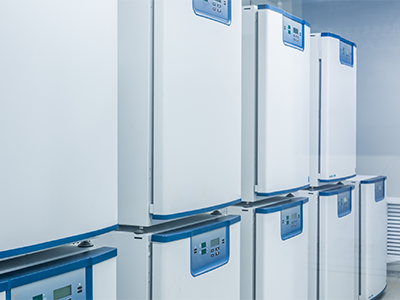
Data Evaluation: Five things to know before performing a thermal validation
Mike Edwards
Features Alpha Controls data thermal validation Alpha Controls & Instrumentation recently added validation to its growing portfolio of services.
Alpha Controls & Instrumentation recently added validation to its growing portfolio of services. Validation plays a significant role in some of the world’s most critical industries. From life sciences to aerospace and food and beverage, the process ensures that the equipment being used in their respective fields performs within certain parameters.
In general, equipment validation involves collecting and evaluating data from the process design stage to production with the intent of establishing scientific evidence that a process is capable of consistently delivering quality products.
More specifically, the five things below are summarized to know before performing a thermal validation for equipment such as incubators, autoclaves, fridges, freezers, stability chambers, and warehouses:
- Know the standard
Thermal validation is governed by many different standards. There’s not a one-size-fits-all approach for all industries, nor for all equipment – meaning the protocols need to be tailored to the appropriate standard. For example, an incubator might be validated according to World Health Organization (WHO) regulations, whereas a warehouse might adhere to ASTM. Some of the standards that Alpha Controls & Instrumentation adheres to include cGMP, WHO, USP, ISPE, ASTM, ICH, NADCAP and Health Canada. - Understand the equipment
Just like the standards, not all the equipment being validated can be considered equal. Stability chambers, for example, can range in size from a bench unit to the size of a small room – and the size dictates the type of validation to be performed. Variables such as the size of a piece of equipment also dictates the validation protocols themselves — as specific as where the probes are positioned.
- Use the right tools
Thermal validation can be performed with a few different tools such as thermocouples, RTDs, and data loggers that can be either wired or wireless. Mapping a warehouse, for example, might require more than 100 data loggers, thereby dictating a wireless approach. Meanwhile validating within an extremely cold environment might require wired thermocouples given the limited effectiveness of wireless data loggers at temperatures under -80°C. The key is understanding the limitations of the different systems and deploying the best ones — sometimes even considering a hybrid approach.
- Follow the appropriate protocols
The devils in the details when it comes to proper validation, meaning the protocols must meet the standards they are using. This, in turn, requires a good understanding of Good Manufacturing Practices (GMP) that involves extensive documentation of the necessary protocols.
- Get the proper training
Lastly, it’s important that validation technicians are properly trained on the standards they are using – notably the execution, assessment, and reporting of those standards.
Alpha Controls & Instrumentation recently added validation to its growing portfolio of services, with the initial focus on temperature, humidity, pressure, and CO2 for controlled mapping of storage areas and equipment such as warehouses, cold rooms, incubators, autoclaves, ovens, and tanks.
Its lab is accredited to ISO/IEC 17025 (scope # 2260.01) set by the American Association for Laboratory Accreditation (A2LA), as well as ISO 9001:2015 for quality management.
In addition, the company’s experienced team of technicians uses FDA 21CFR Part 11 validated software to execute IQ/OQ protocols and equipment from recognized leaders such as Fluke Calibration and Kaye Instruments.
Learn more about how Alpha Controls can solve validation needs by reaching out to its trained representatives.
Print this page